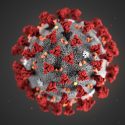COVID questions: Masks at school; what makes delta different
Editor’s note: We will be publishing answers to questions about COVID-19 and the pandemic each week in this COVID questions column. If you have a question, please email it to covid19update@uc.wisc.edu.
Q: I am curious to learn more about masking of unvaccinated children in a school setting. Is this something I should worry about? The idea that my kid can wear a mask and be protected goes against what we’ve been told this last year, that masks are more for other people’s protection against germs you may be harboring.
A: The recent emergence of the highly infectious delta variant changes how we must now look at things, and masks are more important than ever. Parents should be aware that the Centers for Disease Control and Prevention now recommends that everyone in a K-12 environment, regardless of vaccination status, should wear masks in school.
Masks are barriers that separate your child’s exhaled breath from the space and people around them. Cloth masks will provide some protection to your child, and the benefit is greater when they are made of multiple layers of tightly woven, breathable fabric (if they block light, that’s a good sign), are properly sized with adjustable ear loops, have nose wire to improve fit, and have no vents (source: CDC). KN95 masks are available for children and afford the best protection for your child and others in a room.
Your child is most protected when everyone in a room is also wearing a mask. Add distance between your child and others, and they will be even safer. The chances of your child picking up the infection in school during those times when their mask use is less than perfect are lower when rates of COVID-19 cases in the community are minimal, vaccination rates are high, and when children who have any flu-like symptoms refrain from attending school. Let your child know that it takes cooperation and healthy decisions made by everyone in a community to keep COVID-19 under control and children safe.
—Ajay Sethi, associate professor of population health sciences
Q: What makes the delta variant different than the others? Do existing COVID-19 vaccines protect against it? And what should I do to keep myself safe?
A: New information from Public Health Madison & Dane County shows the amount of virus in nasal swabs from vaccinated and unvaccinated people in Dane County who were tested for COVID between June 10 and roughly July 24 is just about the same. We have some people who have really high amounts of virus even though they’ve been vaccinated. That’s important for about five different reasons.
First, people who have symptoms, even if you’ve been vaccinated, need to keep getting tested. It’s super important because if you have one of these high viral loads and you’re walking around without a mask, you’re potentially going to expose others to the virus.
The second is that if you’ve been vaccinated, you’re still going to need to take precautions. You’re going to need to wear masks in some indoor settings. It was really heartening to hear the updated guidance on K-12 schools.
It’s also important to remember that the vaccine protects from severe disease. Even if you’ve been fully vaccinated and have a really high amount of virus in your nasal swab, you’re not likely to get sick, you’re not likely to be hospitalized and you’re not likely to die. It’s all the more reason to get vaccinated and encourage others to do the same. However, I have to emphasize that this is provisional. When we first got the vaccine data earlier in the year, we thought that the vaccine would curtail the amount of virus that you detect in nasal swabs. And indeed it did until this delta variant emerged.
The delta variant seems to be partially resistant to the vaccines, and certainly the high amount of virus that gets produced by people who are infected with delta leads to the situation where some people who get infected after being vaccinated nonetheless have a lot of virus in their systems. It’s important to note, then, that six months to twelve months from now that protection from severe disease and death could change. It might not. But we really have no way of knowing. We’re in a situation where we’re building the plane while we’re flying it, and we’re getting this data in real time. And our war against the virus is going to be a series of battles, not one single decisive battle where we get a vaccine and then everything is easy and downhill from there.
We also have to be wary of the fact that additional variants — delta plus, delta plus pro max, whatever you want to call the next set of variants — are going to emerge, and they’re likely to have even more worrisome properties. We don’t know if some of the future variants might have an easier time infecting people who are younger and causing more serious disease, or if they’ll be more resistant to the vaccines, or if they’ll cause even higher levels of virus and more contagiousness. We just don’t know enough to predict how the virus is going to behave, who is going to be at risk, and how well these variants in the future are going to respond to vaccines and therapies.
If you’re vaccinated, that’s great. But you still have to be prepared for inconveniences that are going to get worse as the next several months unfold. We’re going to all have to do our part to try to beat down the wave. We don’t want to find out two months from now that we made unforced errors.
—David O’Connor, professor of pathology & laboratory medicine, from UW Now Livestream on the delta variant
See more answers to COVID questions at news.wisc.edu/tag/covid-questions/. Also, visit our COVID-19 impact site.



